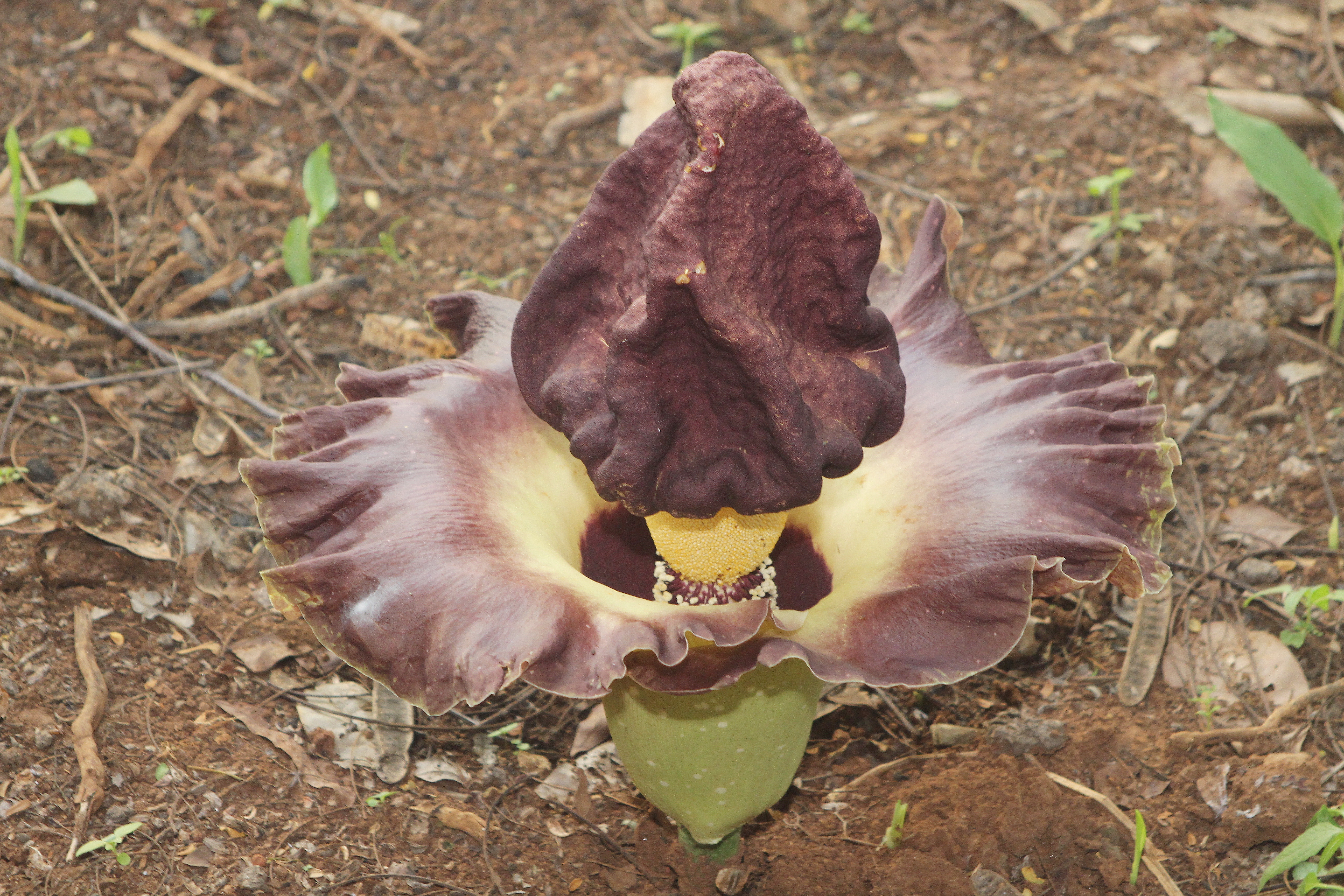Elephant foot yam
(Amorphophallus paeoniifolius)

Description
Amorphophallus paeoniifolius, the elephant foot yam or whitespot giant arum, is a tropical tuber crop grown primarily in Africa, South Asia, Southeast Asia and the tropical Pacific islands. Because of its production potential and popularity as a vegetable in various cuisines, it can be raised as a cash crop. The plant blooms annually around the beginning of the rainy season. The flower bud emerges from the corm as a purple shoot, and later blooms as a purple inflorescence. The pistillate (female) and staminate (male) flowers are on the same plant and are crowded in cylindrical masses as an inflorescence. The top part is responsible for secreting mucus that gives off a putrid, pungent smell that is used to attract pollinating insects, the middle part of the inflorescence contains staminate, and the base of the inflorescence contains pistillate. The stigmas of the female flowers will be receptive on the first day of the bloom, when the pungent smell draws pollinating insects inside, and the inflorescence closes, trapping them for a night to allow the pollen deposited on the insect to be transferred to the stigmas. Later in the second day, the female flower is no longer receptive to pollens, the male flowers start to bloom, and the inflorescence opens again. This allows the pollen to be deposited on the emerging insects to pollinate other flowers, while preventing the pollen from the same inflorescence fertilising itself, preventing inbreeding. In 24–36 hours, after the first bloom of the inflorescence, the inflorescence's female flowers start developing into berries bright red fruiting bodies, and other parts of the inflorescence start wilting away. The berries are red when ripe and are not quite round, being subglobose or ovoid. While the flowers are in bloom they also produce heat. They die after five days. The elephant foot yam is used as food in Island Southeast Asia, Mainland Southeast Asia, South Asia, New Guinea, Oceania, and Madagascar. Its origin and center of domestication was formerly considered to be India, where it is most widely utilized as a food resource in recent times. But a genetic study in 2017 have shown that Indian populations of elephant foot yams have lower genetic diversity than those in Island Southeast Asia, therefore it is now believed that elephant foot yams originated from Island Southeast Asia and spread westwards into Thailand and India, resulting in three independent domestication events.
Taxonomic tree:







